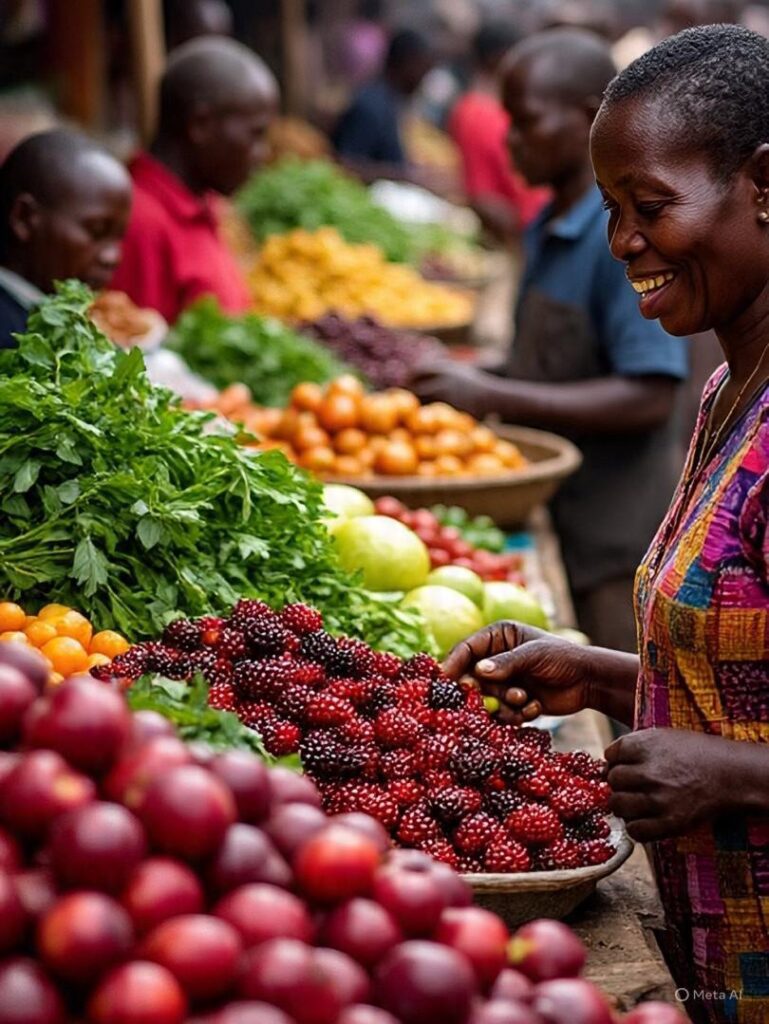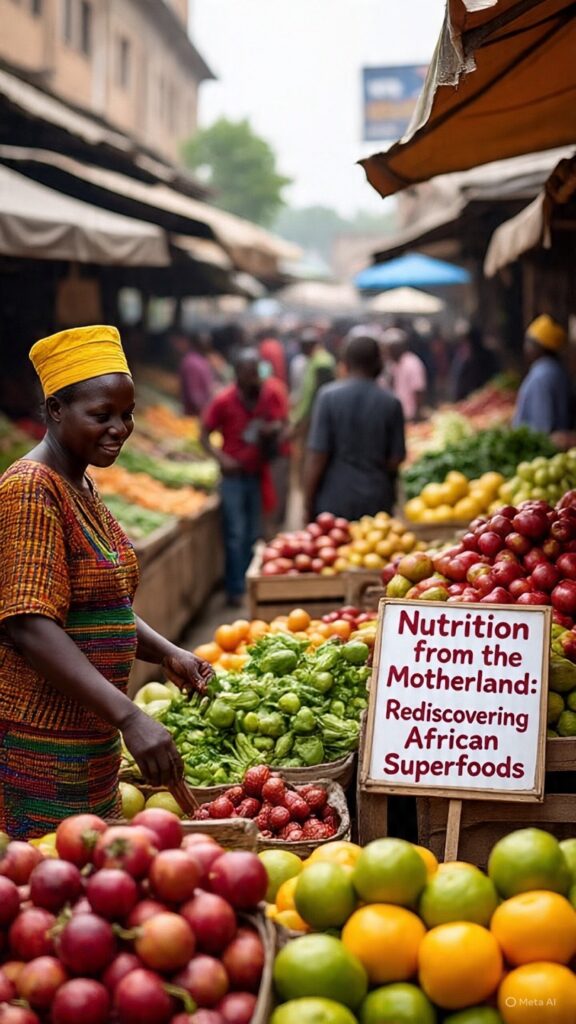Nutrition from the Motherland…
4 min read
…Rediscovering African Superfoods
Editorial – In recent years, the global health and wellness industry has turned its gaze towards Africa, a continent rich in biodiversity and traditional food systems that have nourished generations for centuries.
From the ancient baobab tree to the humble millet grain, African superfoods are being rediscovered, celebrated, and innovatively adapted for modern consumption.
Among these are baobab, moringa, millet, and even traditional staples such as sadza, which are being reimagined to meet the demands of a health-conscious world.

This rediscovery is not only redefining nutrition but also positioning African gastronomy at the forefront of global food innovation.
One of the standout superfoods is baobab, often referred to as the “tree of life.” Native to the African savannah, the baobab fruit is packed with vitamin C, calcium, potassium, and antioxidants. For generations, African communities have consumed baobab pulp as a natural remedy for digestive health, hydration, and immune support.
Today, baobab is being incorporated into smoothies, health drinks, and energy bars across Europe, North America, and Asia.
Its tangy flavor and remarkable nutrient profile make it an appealing addition to the global superfood market.
Similarly, moringa, a leafy green often called the “miracle tree,” is making waves worldwide.
Rich in iron, protein, and vitamins A and C, moringa has long been a dietary staple in many African households.
Traditionally used in soups, stews, and herbal teas, it is now available in powdered form, capsules, and even as a base for plant-based protein blends.
Its ability to thrive in arid climates also makes moringa a sustainable solution for combating malnutrition in regions affected by food insecurity.

Millet, once overshadowed by imported grains such as rice and wheat, is experiencing a revival both within Africa and beyond.
This ancient grain is gluten-free, high in fiber, and boasts a low glycemic index, making it ideal for people managing diabetes or seeking healthier carbohydrate alternatives.
In Zimbabwe, millet is being reintroduced into school feeding programs and urban households, while chefs around the world are experimenting with millet-based bread, porridge, and snacks.
Even sadza, Zimbabwe’s iconic staple made from maize meal, is undergoing a health-conscious transformation.
Traditionally prepared with white maize, which is lower in fiber and micronutrients, modern innovations are incorporating sorghum, millet, and fortified flours to enhance its nutritional value.
Sadza is now being served with leafy greens, lean proteins, and plant-based sauces, turning this comfort food into a balanced and globally appealing meal.
A significant platform that has helped propel these superfoods into the spotlight is the Gastronomy Festivals spearheaded by Her Excellency Dr. Auxillia Mnangagwa, the First Lady of Zimbabwe.
The Gastronomy festivals by the First Lady, Her Excellency Dr. Auxillia Mnangagwa have become an annual celebration of African culinary heritage, showcasing indigenous ingredients and traditional recipes while promoting healthier eating habits.
Dr. Mnangagwa has championed the inclusion of baobab juices, moringa-infused dishes, and millet-based delicacies in both local and international culinary exhibitions.

Her vision is to inspire Zimbabweans and Africans at large to embrace their rich food heritage while simultaneously creating export opportunities for local farmers and food producers.
At these festivals, chefs, nutritionists, and food entrepreneurs collaborate to create innovative dishes that blend the old with the new.
For instance, one popular recipe featured a moringa and baobab smoothie bowl topped with millet granola—an Instagram-worthy creation that fuses traditional African ingredients with modern wellness trends.
Another highlight was gourmet sadza served in bite-sized portions with spicy peanut sauce and seasonal vegetables, offering a fresh twist on a national favorite.
The growing global interest in African superfoods is more than just a passing trend; it reflects a broader shift towards sustainable, culturally-rooted nutrition.
Consumers today are increasingly conscious of where their food comes from, how it is produced, and its impact on both health and the planet.
African crops like millet and moringa often require fewer resources to cultivate compared to industrialized crops, making them eco-friendly choices that support climate resilience.
Moreover, the economic potential of this rediscovery cannot be overstated.
By promoting indigenous superfoods, African nations can open new markets for farmers, create jobs in food processing and export, and strengthen food sovereignty.
Zimbabwe, with its fertile lands and culinary diversity, is well-positioned to lead this movement.
Initiatives such as the Gastronomy Festivals have already attracted international buyers and partnerships, paving the way for local products to reach supermarket shelves across the globe.
However, for African superfoods to achieve sustained success, there is a need for investment in research, quality assurance, and value addition.
This includes establishing proper supply chains, training farmers in organic farming methods, and ensuring products meet international health and safety standards.
Government policies, private sector engagement, and consumer education will also play crucial roles in scaling up the industry.
As more people worldwide rediscover the nutritional treasures of Africa, the narrative around African food is shifting from one of subsistence to one of innovation, health, and pride.
From baobab smoothies in New York to millet pancakes in Paris, these foods are no longer confined to rural kitchens; they are becoming global staples.
In Zimbabwe, the revitalization of sadza through nutritious innovations reflects a growing movement to reclaim traditional foods not as relics of the past but as the foundation of a healthier future.
The journey of African superfoods is far from over. With champions like Dr. Auxillia Mnangagwa promoting culinary heritage and fostering international recognition, the Motherland’s bounty is stepping confidently into the global arena.
As the world searches for sustainable and wholesome dietary options, Africa offers not just ingredients, but a story of resilience, tradition, and transformation—served on a plate.
——————————————
Zim Global Media News 🗞️
an Afrocentric Voice







